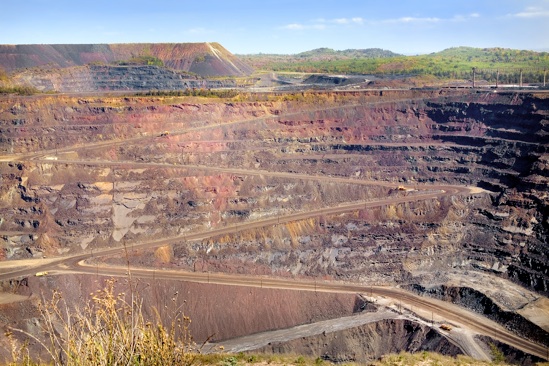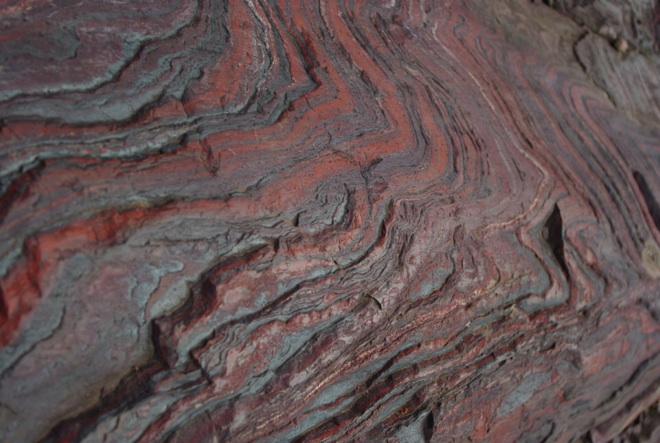Iron Formation
2012
Iron in the Oceans of Earth
Stats
name Iron Formation
location Ishpeming, Michigan
KMX download here
subjects Iron ore, Lake Superior

Iron is abundant in the earth and in the meteorites that accumulated and melted during the Hadean. This iron was mainly in a reduced state (ferrous iron), and so when the Earth cooled and rain fell on these Hadean volcanic rocks, iron dissolved and was carried as ferrous ions to the ocean. This situation doesn’t happen today, because the high content of oxygen in the ocean and atmosphere oxidizes iron and when both ferrous and ferric iron are present, oxide minerals like hematite and magnetite form. The color of rock changes as iron oxidizes. Often ferrous iron imparts a green color, while oxidized rock containing ferric iron is reddish or rusty. Red rocks began to be abundant on earth in Archean time, after stromatolites were present as fossils. Thus scientists have theorized that the photosynthesis of cyanobacteria released oxygen to the water and atmosphere, leading to oxidation of ferrous iron, which led to oxide mineral formation. The great iron deposits of the world mostly happened between 1.8 and 3.3 by ago, while the ocean was beginning to be oxidized.
The boulders in this iron ore boulder garden on the Michigan Tech Campus were transported from the Tilden Mine in September 2012. They were hand picked and selected for variety from the open pit for public view.

Gracefully coiled filaments are easily seen by the naked eye in these 2.1-billion-year-old fossils from the Upper Peninsula's Empire iron mine. They are possibly the oldest "megascopic" formations of life forms ever found.
Tsu-Ming Han, Cleveland Cliffs Inc.




